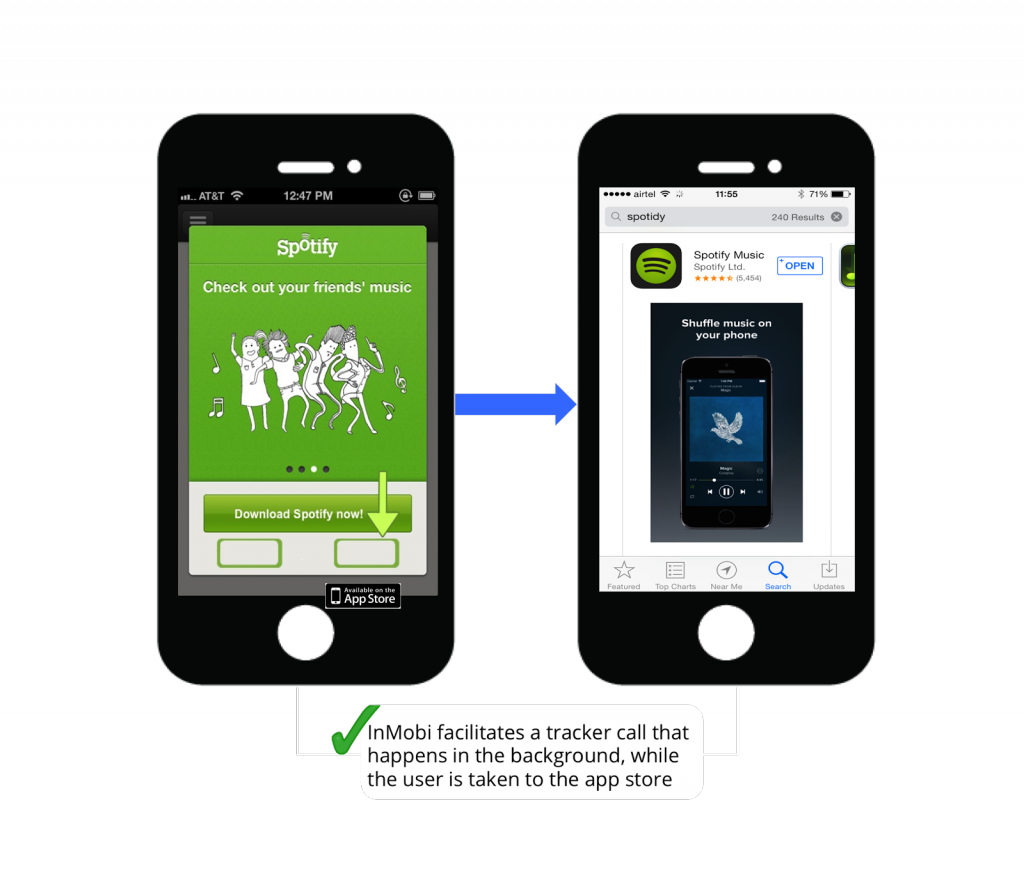Fuel campaign performance with laser-focused targeting

As an app developer promoting your app on paid channels, the install rate ( i.e the percentage of users downloading the app post clicking an ad) is the metric that matters the most to you. While improving ad-relevance and enhancing ad-experience are the right strategies to improve this metric,there may also be several technical reasons that may lead to losing a user who had the real intent to install your app.
Post-Click Latency - i.e the delay between the user clicking the ad, and being taken to the appstore, is a major reason for click loss and consequent lower install rates. Two important reasons for post click-latencies are:
In this post, we will focus on how we have solved for tracker redirection related latency issues.
When a user clicks on an ad, he is momentarily redirected to a different page, where the tracker collects the tracking parameters (such as a device id or fingerprint) to facilitate a conversion/install attribution. Currently, these tracker calls are synchronous i.e they happen in succession.
Click loss due to redirections is directly proportional to the number of redirections and the time it takes for the redirection to happen. With some networks like DSPs, there may be multiple redirections for a single click. Also, in regions with high latency such as China*, the time taken for redirections might be really high. We have noticed that on an average, about 20% of users who click on your ad are lost in this step alone!
For attributions to happen through the Google Install Referrer and Device Fingerprints, redirections become a necessity. Since at least one of these two identifiers are required in addition to the to the Device ID, in order to minimize attribution losses, it may not be wise to do away with redirections completely.
At InMobi, we have found a solution.
Redirections need to happen, but not necessarily in a synchronous fashion. InMobi's SDK is capable of performing the tracker redirections asynchronously without damping the user experience. InMobi is also capable of making the tracker calls from server side, which increases tracking accuracy without adversely affecting attribution.
To the user, transition to the app store is smooth without any abrupt redirections. We’ve found this to improve install rates by almost 15-20% in many cases.
Given most performance advertisers are working with independent 3rd party trackers, InMobi is also working hard to build deep technical integrations with top players in the tracking & attribution space, to extend the benefits of our advanced technology to all partners.
In our next blog, we’ll discuss more about latencies in app store launch and its impact on CVR. Stay tuned!
*Latency in china is due to servers being located outside of China. In cases where servers are located in US or Europe the round trip time is longer leading to latency. DNS servers are located out of China as well, which leads to longer DNS resolution times.
Register to our blog updates newsletter to receive the latest content in your inbox.